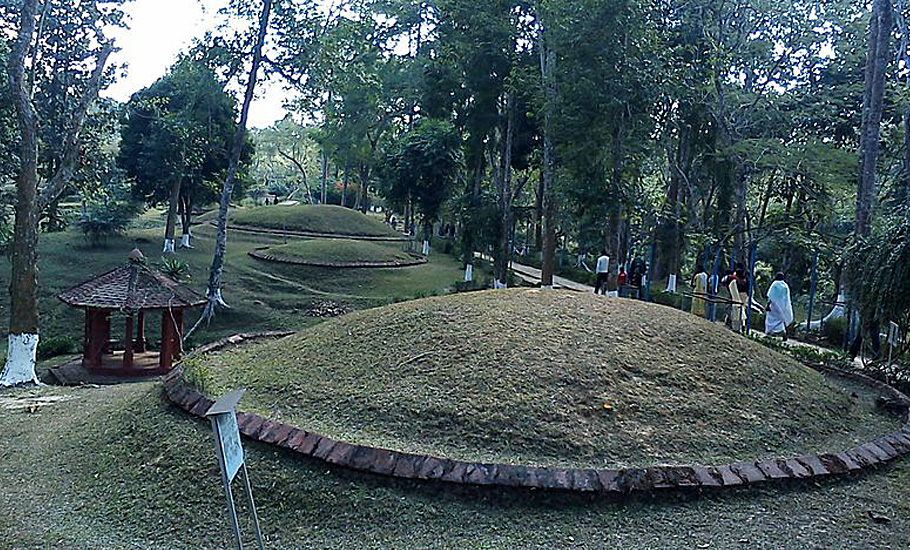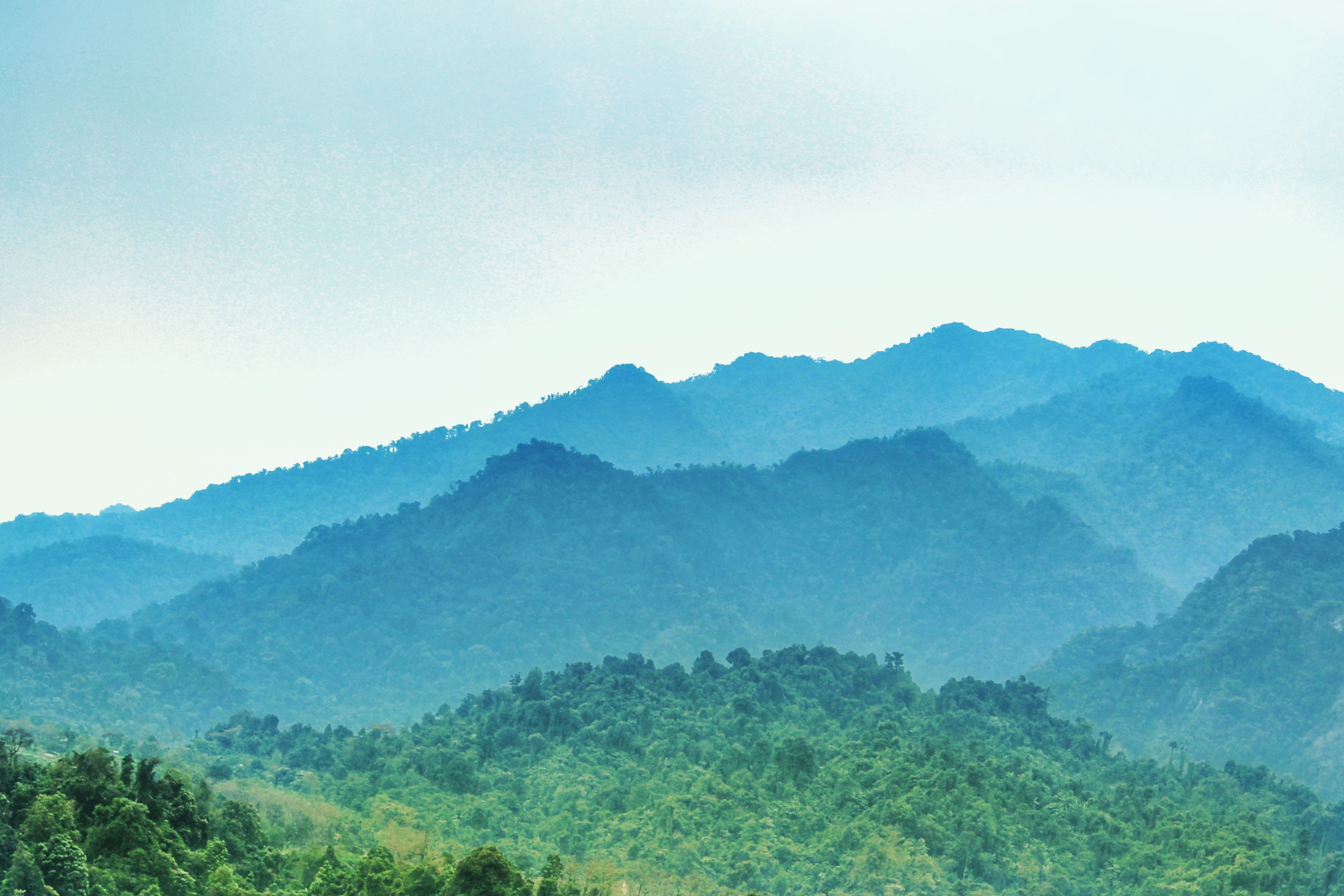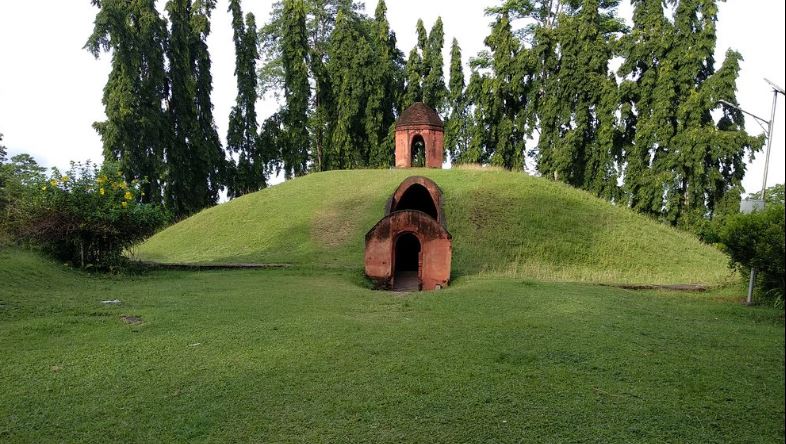
- Home
- News
- Analysis
- States
- Perspective
- Videos
- Education
- Entertainment
- Elections
- World Cup 2023
- Features
- Health
- Budget 2024-25
- Business
- Series
- NEET TANGLE
- Economy Series
- Earth Day
- Kashmir’s Frozen Turbulence
- India@75
- The legend of Ramjanmabhoomi
- Liberalisation@30
- How to tame a dragon
- Celebrating biodiversity
- Farm Matters
- 50 days of solitude
- Bringing Migrants Home
- Budget 2020
- Jharkhand Votes
- The Federal Investigates
- The Federal Impact
- Vanishing Sand
- Gandhi @ 150
- Andhra Today
- Field report
- Operation Gulmarg
- Pandemic @1 Mn in India
- The Federal Year-End
- The Zero Year
- Premium
- Science
- Brand studio
- Home
- NewsNews
- Analysis
- StatesStates
- PerspectivePerspective
- VideosVideos
- Entertainment
- ElectionsElections
- Sports
- Loading...
Sports - Features
- Budget 2024-25
- BusinessBusiness
- Premium
- Loading...
Premium

Assam’s Maidams: India’s very own pyramids
Today, with the maidams having been systematically restored to safeguard their structural integrity, the Assam government is in the process of finalising the dossier of the site—which will be sent to the Centre and then to the Unesco for world heritage recognition.

As the Assam government finalises the dossier of Charaideo maidams for Unesco World Heritage Site recognition—seen as an attempt to woo Ahoms voters ahead of the 2021 Assembly elections—Monideepa Choudhuri profiles India’s very own pyramids. On April 15, 2014, Unesco included maidams, the mound-burial system of the Ahom dynasty that ruled most of present-day Assam from 1228-1826, in...
As the Assam government finalises the dossier of Charaideo maidams for Unesco World Heritage Site recognition—seen as an attempt to woo Ahoms voters ahead of the 2021 Assembly elections—Monideepa Choudhuri profiles India’s very own pyramids.
On April 15, 2014, Unesco included maidams, the mound-burial system of the Ahom dynasty that ruled most of present-day Assam from 1228-1826, in its tentative list of World Heritage sites.
It was included under criterion V—“an outstanding example of a traditional human settlement, land-use, or sea-use which is representative of a culture (or cultures), or human interaction with the environment, especially when it has become vulnerable under the impact of irreversible change”.
India’s very own pyramids, the maidams in Charaideo, about 30 kilometres east of the historical town of Sivasagar in upper Assam, were built—quite like those of Egypt’s—to endure an eternity.
However, unlike the pyramids of Egypt’s Giza which stand out tall and massive against the stark desert landscape, the Charaideo necropolis in the foothills of the Patkai mountain range seem to shyly blend into the undulating, green topography of its setting.
These monumental vaulted tombs that helped the departed souls of 37 of the 42 Ahom royals of yesteryears transcend into after-life, are among the masterpiece relics of the Tai Ahom kingdom that have stood through the vagaries of time—a unique and exotic slice of India’s heritage that remains largely unknown and unvisited.
From the pages of history
When Chau-lung Siu-ka-pha and 9000 Tais—an ethnic group that today inhabits much of South China and Southeast Asia—migrated from Mong Mao Ling, a south-west province of China, they established their first capital in the foothills of the Patkai mountain range and named it Che-rai-doi, meaning ‘a dazzling city above the mountain’.
“Troubled by Chinese expansion and suppression, the Tais had begun moving south-westward along rivers and over the lower passes of mountains from the first century CE itself. The Tai Ahoms, the admixed descendants of Siu-ka-pha and his followers, reached Assam in the 13th century,” says historian Sangeeta Gogoi, who has specialised in Tai-Ahom studies.

Over the years, even though the clansmen moved from city to city in the region, expanding the mighty Ahom kingdom, “the landscape of Che-Rai-Doi or Charaideo continued to retain its position as most sacred”.
Ahom kings and royals who were deemed no less than gods on earth were, not surprisingly, chosen to be buried in Charaideo, the sacred core of the kingdom.
The Tai belief system of life, death, spirit, and the ‘other world’ appropriated a corresponding funerary. And it is this expression of belief that, as Unesco describes, has manifested in the “creation of an undulating landscape reminiscent of the mountains of heaven”.
Spirits at rest
Given that the burial system was a part of Tai tradition, maidams are spread across many areas in the upper Assam region—Bahikhowa Maidam inside Khowang tea estate in Dibrugarh being one such. However, it is the maidams of Charaideo—categorised into four sets and labelled numerically—that remains the only area where the largest concentration of vaulted-mound burial chambers exist together.
“This royal burial landscape is most remarkable and holds its own worth of heritage against the pyramids of Egypt’s Pharaohs and the royal tombs of ancient China,” says Sangeeta Gogoi.
The word maidam is derived from the Tai word phrang maidam—phrang mai meaning put into the grave and dam meaning the spirit of the deceased.
In Tai-Ahom Religion and Customs, educationist and folk history researcher Padmeswar Gogoi says, burial of the dead was the custom—until Ahom rulers began to be influenced by Hindu and Buddhist cultural practices.
The Ahoms’ canonical text Changrung Phukan says that wives, attendants, pet animals, and a huge quantity of valuables were also buried with the departed kings.
Shihabuddin Talish who visited Assam when Mir Jhumla, the Mughal Subedar of Bengal, invaded Assam in 1662-63, writes in Tarikh-e-Asham, “They (the Ahoms) bury their dead with some of their patrimonial properties keeping the head towards the east and leg towards the west. The noble and high-ranking officers prepare funeral vaults (maidams) for their dead and also put some utensils made of gold and silver, carpet, dress materials and eatable items necessary for a period of several years inside it.”
Later, in 1848, while describing the maidam of Ahom noble Purnananda Burhagohain in a letter to Major S. F. Hanny, C. Clayton writes that “a large number of items such as golden rings, silver toothpick case, ear ornaments, vessels or utensils for cooking and eating food and drinking water, a small iron axe, a small gold vessel for keeping lime, etc. were buried with his body.”

Archaeological excavations have also led to discoveries of objects used by the deceased during his life such as royal insignia—wooden, ivory or iron—gold pendants, ceramic ware, weapons, clothes to the extent that human beings were buried with their king.
Architecturally speaking
A massive underground vault with one or more chambers and a domical superstructure covered by a heap of earthen mounds in the shape of a hemisphere is how Changrung Phukan describes a maidam. These hemispherical facades, much like the half of an egg, are interesting design composites—with garva as the place where the body of the deceased is kept along with required articles, gamoidam as the main body of the maidam, garh the brick wall protectively surrounding it, chauchali the open pavilion on top of the moidam for annual offerings and nakh, an octagonal line of bricks between gamoidam and the garh, with an arched doorway on its west.
The early maidams, constructed between 13th and 17th century CE, were primarily of wood. It is only after the 18th century that stone slabs and brick masonry of various sizes came to be used for the inner chambers. What perhaps added the singular flavour was an interesting composition of organic and inorganic construction materials—ranging from molasses to black gram, fibre of hemp, various kinds of lime, barali fish, resin, stone of various sizes, bricks and its powder.
Towards a heritage site
With research into Tai ancestry and migration intensifying, the maidam tradition has been observed in different parts of northern Vietnam, Laos, Thailand, northern Burma, southern China, besides Northeast India. But while all of this defines a region of similar culture, none of the vaulted tombs can hold a torch to the cluster in Charaideo, which is distinctive in scale and concentration.
Over the centuries the maidams have suffered deep plunder. Since the time Dutch sailor Frans Jansz van der Heiden who accompanied Mir Jhumla during the latter’s invasion of Assam wrote about “plundering the graves (maidams),” Charaideo has been vulnerable to treasure seekers and encroachers over decades and centuries.
Today, with the maidams having been systematically restored to safeguard their structural integrity, the Assam government is in the process of finalising the dossier of the site—which will be sent to the Centre and then to the Unesco for world heritage recognition.

